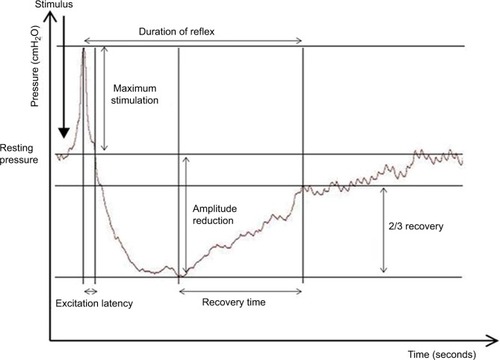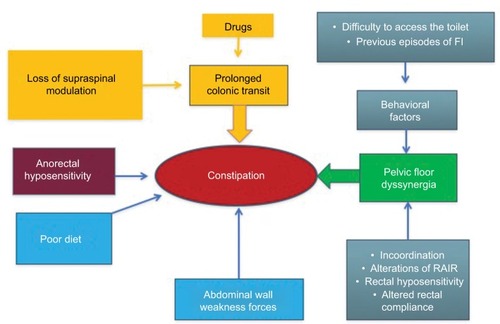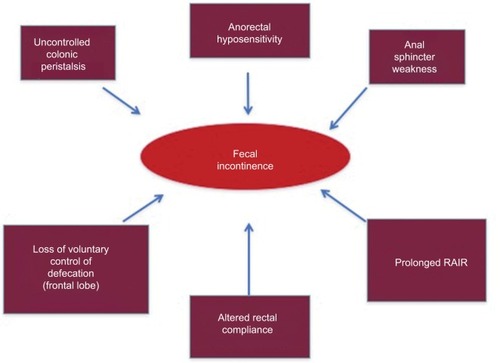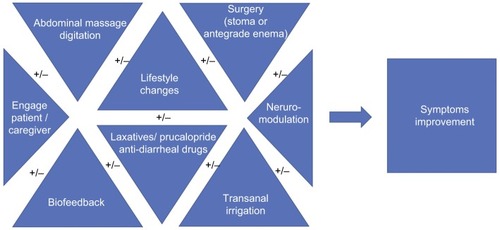Figures & data
Figure 1 Rectoanal inhibitory reflex (RAIR).

Figure 2 Diagram showing the multifactorial origin of constipation.
Abbreviations: FI, fecal incontinence; RAIR, rectoanal inhibitory reflex.

Figure 3 Diagram showing the multifactorial origin of fecal incontinence.
Abbreviation: RAIR, rectoanal inhibitory reflex.

Figure 4 This diagram shows how important it is to tailor treatment, sometimes using a combination of interventions. A stepwise approach is recommended; however, it is paramount to engage patient and caregiver, to understand their preferences and adjust treatment accordingly.

